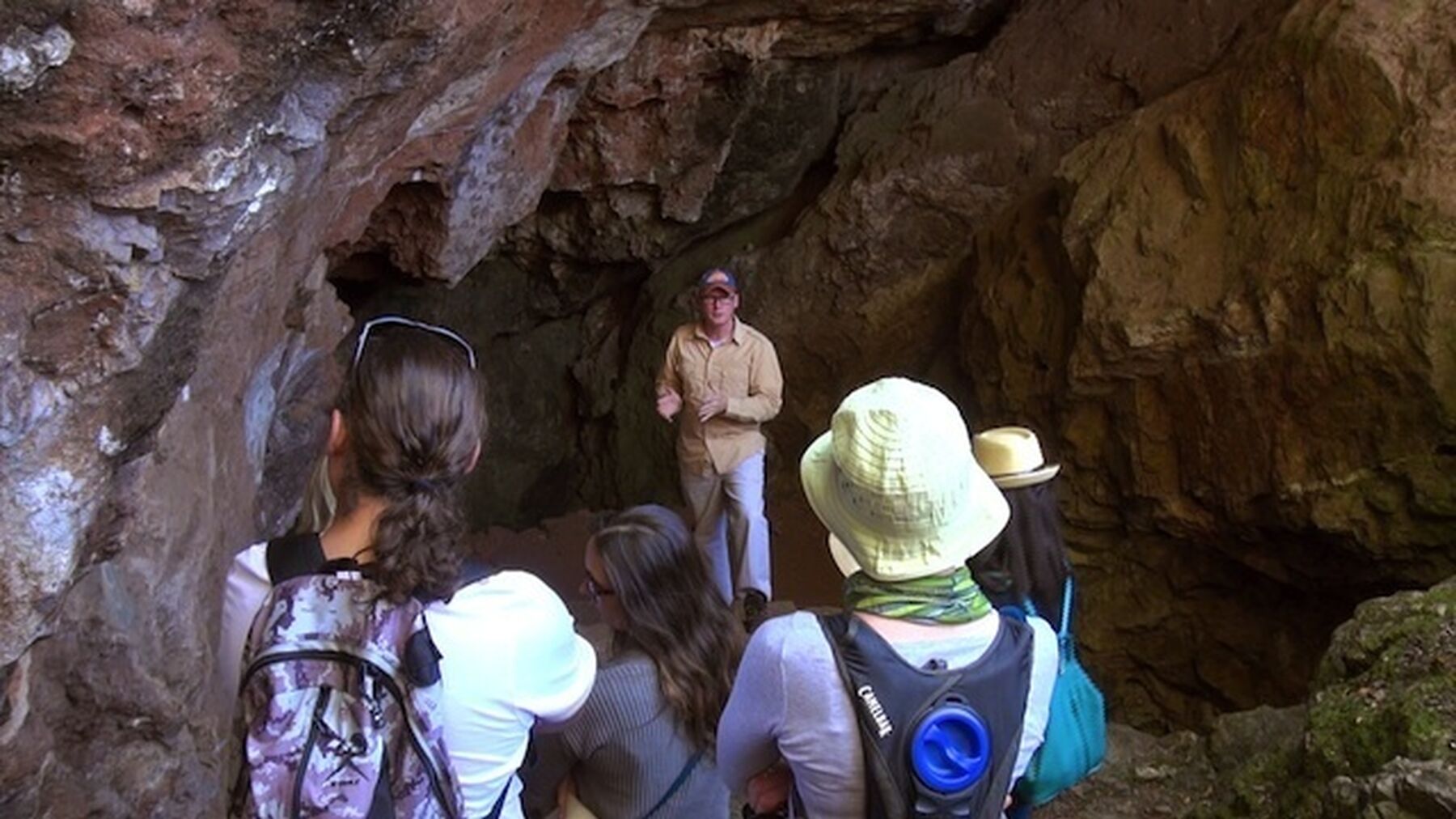On 25 May Flowstar programmers Danny Kopping and Stephen Frank went on an excursion to the Cradle of Humankind World Heritage Site. They joined Dr Morris Sutton on a walking tour of Swartkrans, a National Heritage Site that bears evidence of early man’s controlled use of fire, and stone and bone tools.
Swartkrans is a palaeontological site renowned for its discoveries of various hominid species, particularly Paranthropus robustus. Danny and Stephen couldn’t wait to experience the fossils and the caves first-hand. Little did they know what awaited them at Maropeng.
This is their story.

At sparrow-fart on the morning of May 25, we made our intrepid journey to Swartkrans in the Cradle of Humankind, following the tempestuous and often downright bizarre instructions of our GPS.
As is customary with geeks when mounting early morning expeditions, we drove straight past our destination, oblivious to the signage we’d passed on the road, and proceeded to nervously scour the hazy, brazen landscape for any sign of the famous Tumulus.
We made it to the meeting point a little later than expected, and settled in for the tour ahead. Dr Morris Sutton of the University of Johannesburg rounded up the group and led us on to Swartkrans.
Dr Sutton led us up an oft-trodden path through the landscape, to the doorstep of the Swartkrans site, where he spoke for a few minutes about the history of the site and the discoveries made there since the mid-20th century.
We walked up a stony staircase cut into a small grassy bank to a vantage point overlooking the cave. Stephen and I, being practically albino in our dermal paleness (another occupational hazard of being a geek), struggled with the overwhelming desire for shade, but didn’t want to miss out on the spectacular view.
Dr Sutton spoke about the prevalence of stone tools and bones found in the cave, and what effect that has had on our understanding of human evolution. He then led us down into the belly of the cave, speaking confidently and at length about the cave’s various geological properties, its suitability for palaeo-archaeological excavation, and what he and his research team hoped to find in its current project.
“Not everybody gets to come to work on a two-million-year-old site, and drive home afterwards,” he said with a laugh.
The three-hour tour flew by in a blur of facts, adventure and shielding our eyes from the warm African sun. We walked back to the entrance, where a gourmet lunch awaited us.
The Swartkrans Walking Tour left us with a deep sense of the silent history in that place; the subtle, whispered clues it offered up to us, aeons after the fact, to hint at what happened here all those years ago.
To stand on such hallowed ground was both humbling and inspiring, and we are better (and more tanned) geeks for being part of it.
To book your place on the next Swartkrans Walking Tour, visit the Maropeng online shop.
